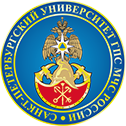Russian Federation
Russian Federation
UDC 621.43.06
UDC 504.3
The issues of physical and mathematical modeling of the processes of distribution, accumulation and extremely dangerous impact of suspended particles from highways on the environment and the health of the urban population under adverse meteorological and special transport conditions during peak hours are considered. The results of a critical analysis of modern domestic and foreign physical-analytical approaches are presented, which are recommended to be used for the physical-mathematical description of the specific processes of emission, propagation and accumulation in the stratified atmosphere in the vicinity of a motorway of solid particles of various origins and, consequently, different levels of negative sanitary hygienic impact, estimated by the maximum permissible concentrations at the level of human breathing. The areas of application of the models and recommended measures to reduce extremely dangerous air pollution with suspended particles of various origins on the highway are analyzed. In conclusion, summarizing conclusions are given on the improvement of the physical and mathematical models analyzed in the work, aimed at improving the accuracy of the results by taking into account relevant factors in order to effectively manage urban air quality.
distribution of pollutants, dusty products, highways, environment, physical and mathematical models, impact, road transport
1. Identification of metals and metalloids as hazardous elements in PM2,5 and PM10 collected in a coastal environment affected by diffuse contamination / H. Morillas [et al.] // Journal of cleaner production. 2019. T. 226. P. 369-378.
2. Seinfeld J.H., Pandis S.N. Atmospheric chemistry and physics: from air pollution to climate change // John Wiley & Sons. 2016.
3. Kargapolov N.V., Rafailova A.L. Ocenka zagryazneniya atmosfernogo vozduha avtomobil'nym transportom v Moskovskom regione // International Journal of Professional Science. 2019. № 10. S. 52-65.
4. Source apportionment to support air quality planning: Strengths and weaknesses of existing approaches / P. Thunis [et al.] // Environment international. 2019. T. 130. P. 104825.
5. Benson P.E. Caline 4-a dispersion model for predictiong air pollutant concentrations near roadways // Transportation research board. 1984. № FHWA-CA-TL-84-15 Final Rpt.
6. Hartley W.S., Carr E.L., Bailey C.R. Modeling hotspot transportation-related air quality impacts using ISC, AERMOD, and HYROAD. URL: http://www.ctre.iastate.edu/educweb/aq/AWMA%20Paper%200406%20Hartley.pdf (data obrashcheniya: 16.07.2023).
7. A user’s guide for the CALPUFF dispersion model / J.S. Scire [et al.] // Earth Tech, Inc. 2000. T. 521. P. 1-521.
8. Daly A., Zannetti P. Air pollution modeling - an overview // Ambient air pollution. 2007. P. 15-28.
9. Mensink C., Kallos G. Air pollution modeling and its application XXV // Cham: Springer international publishing, 2018. P. 114-501.
10. Lozhkin V.N., Penchenkov A.Yu., Gavkalyuk B.V. Fiziko-matematicheskaya model' obrazovaniya, rasprostraneniya, nakopleniya i opasnogo vozdejstviya transportnyh PM10 i PM2,5 s uchetom ih himicheskogo sostava v usloviyah chrezvychajnyh situacij // Nauch.-analit. zhurn. «Vestnik S.-Peterb. un-ta GPS MCHS Rossii». 2019. № 1. S. 1-6.
11. Ob utverzhdenii metodov raschetov rasseivaniya vybrosov vrednyh (zagryaznyayushchih) veshchestv v atmosfernom vozduhe: prikaz Ministerstva prirodnyh resursov i ekologii Ros. Federacii ot 6 iyunya 2017 g. № 273 (zareg. 10 avg. 2017 g. № 47734). URL: http://publication.pravo.gov.ru/Document/View/0001201708110012?ysclid=lmejgnhv19927604848 (data obrashcheniya: 11.09.2023).
12. Short-term exposure to particulate matter (PM10 and PM2,5), nitrogen dioxide (NO2), and ozone (O3) and all-cause and cause-specific mortality: Systematic review and meta-analysis / P. Orellano [et al.] // Environment international. 2020. T. 142. P. 105876.






